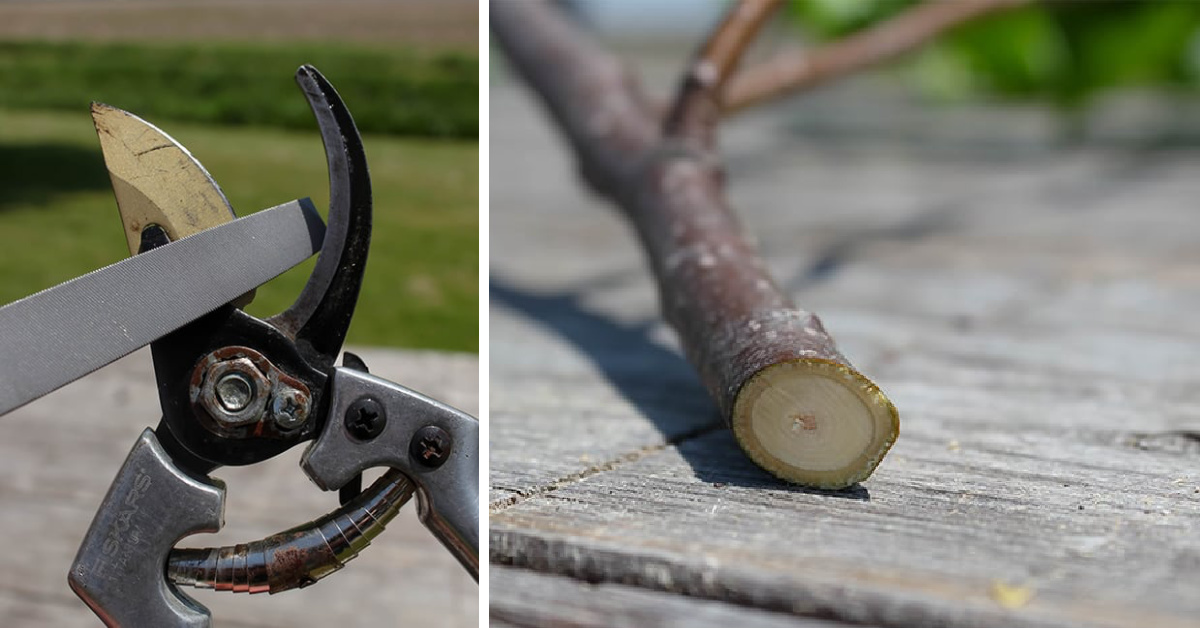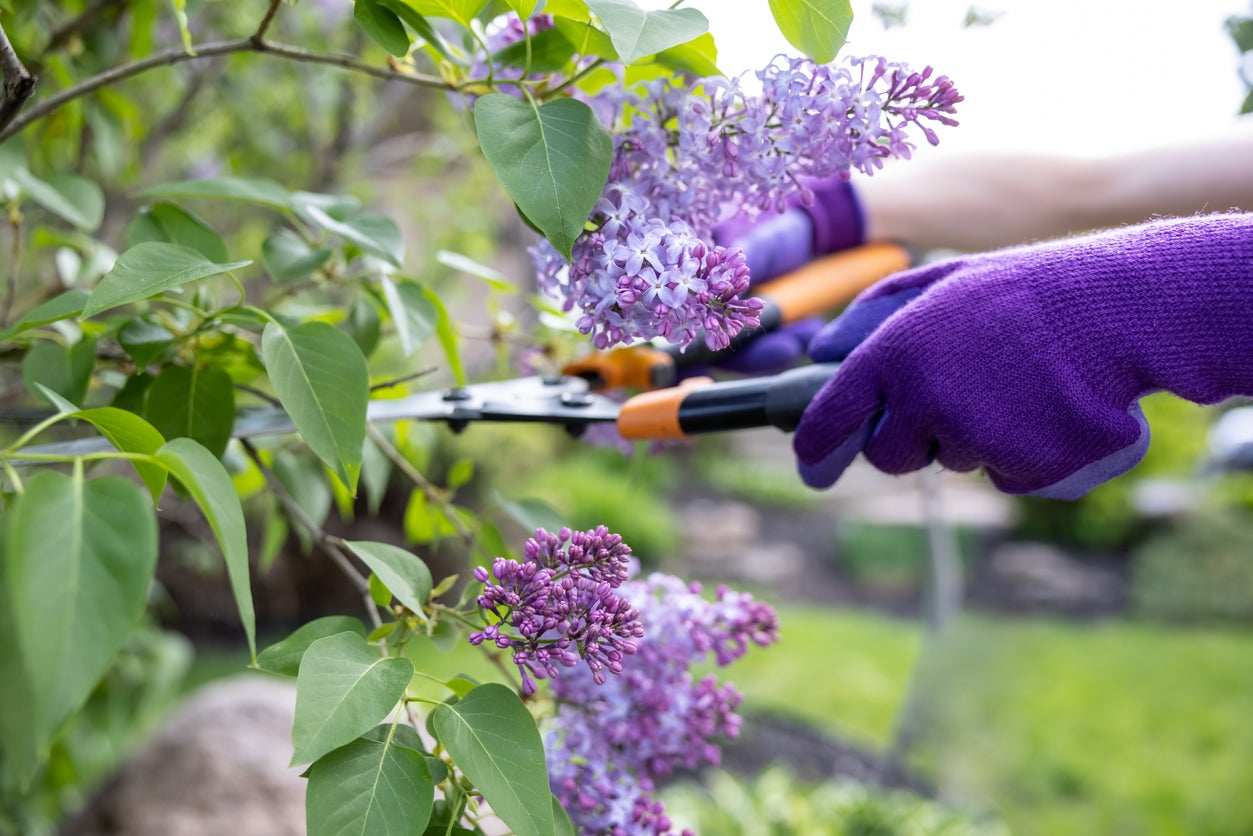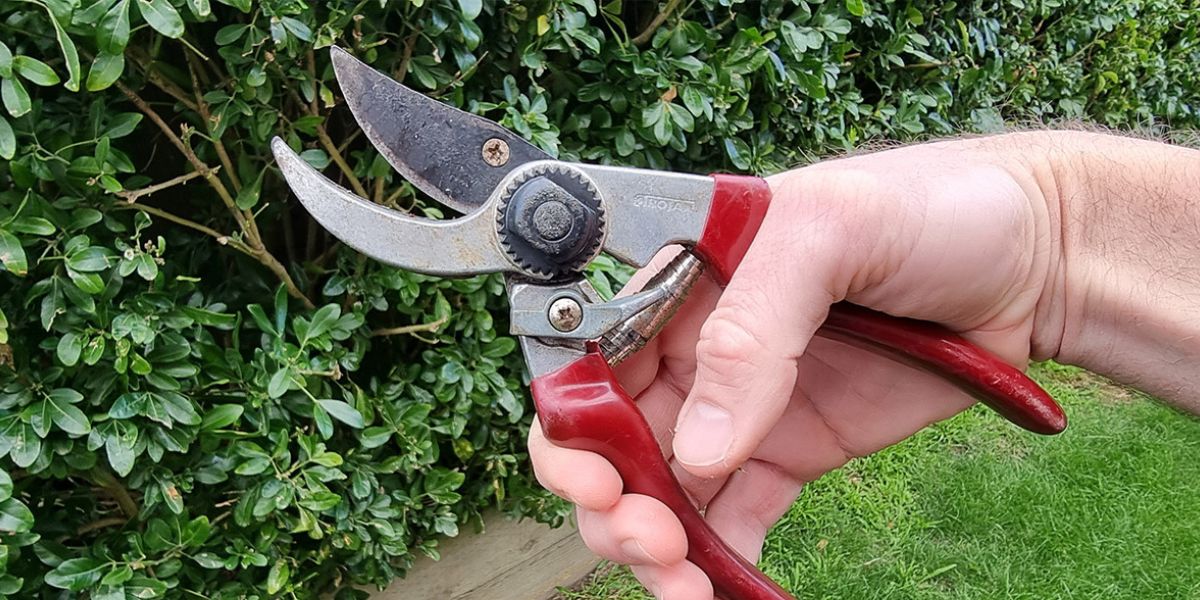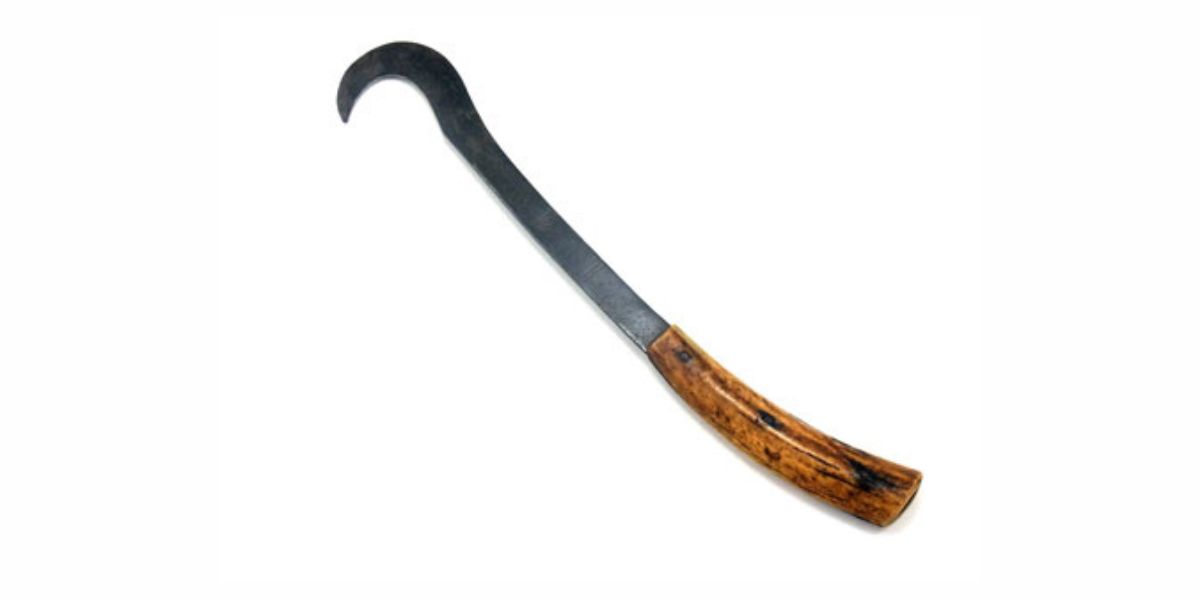Home>Gardening Techniques>Plant Care>How Does Pruning Promote Growth
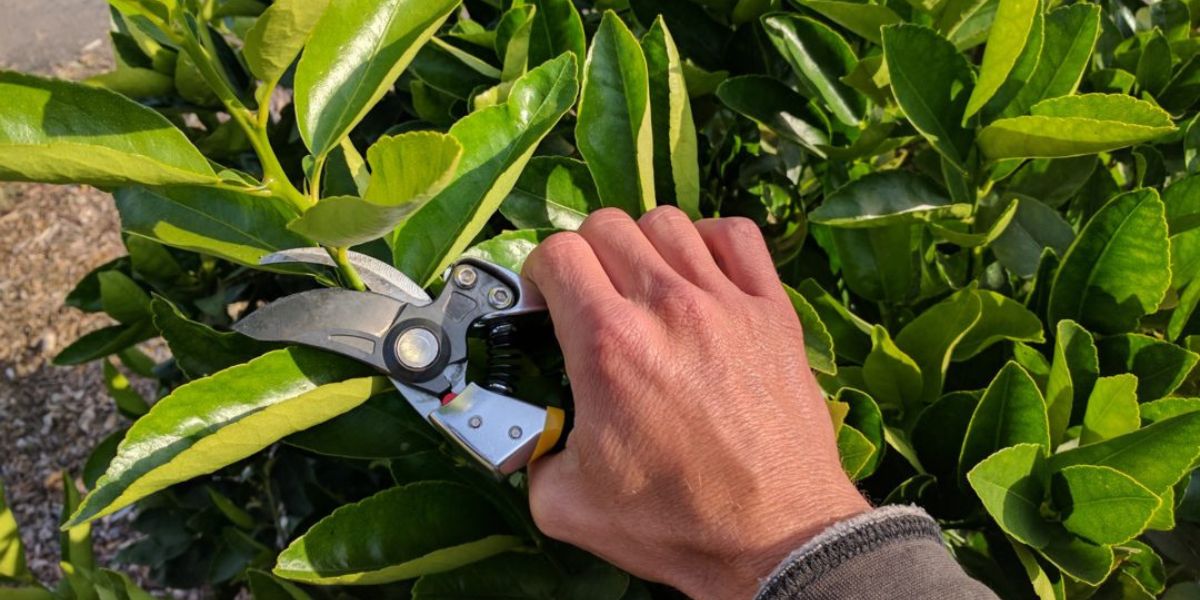

Plant Care
How Does Pruning Promote Growth
Modified: January 22, 2024
Learn how pruning plays a crucial role in promoting growth in plants through proper plant care techniques.
(Many of the links in this article redirect to a specific reviewed product. Your purchase of these products through affiliate links helps to generate commission for Chicagolandgardening.com, at no extra cost. Learn more)
Table of Contents
- Introduction
- Importance of Pruning for Plant Growth
- Mechanisms behind Pruning and Growth Promotion
- Stimulation of New Growth through Pruning
- Removal of Dead and Diseased Branches
- Maintaining Plant Health through Pruning
- Enhancing Plant Aesthetics through Pruning
- Promoting Fruit and Flower Production
- Pruning Techniques for Growth Promotion
- Conclusion
Introduction
Welcome to the world of plant care! Whether you’re a seasoned gardener or just starting out, understanding the importance of pruning for plant growth is key to fostering healthy and thriving plants. Pruning is a horticultural practice that involves the removal of specific plant parts, such as branches or shoots, to improve overall plant structure and stimulate growth.
Pruning not only helps to shape the plant and enhance its aesthetics, but it also plays a vital role in promoting vigorous growth. By removing certain parts of the plant, pruning redirects the plant’s energy towards essential areas, encouraging the development of new branches, leaves, and flowers. It is through this process that plants are able to maintain their health, productivity, and aesthetic appeal.
Understanding the mechanisms behind pruning and growth promotion can help plant enthusiasts effectively care for their plants. In this article, we will explore the various benefits of pruning, including how it stimulates new growth, supports plant health, enhances aesthetics, and promotes fruit and flower production. We will also discuss different pruning techniques that can be employed to maximize growth and ensure the overall well-being of your plants.
Importance of Pruning for Plant Growth
Pruning is a crucial practice for promoting healthy plant growth and overall plant vitality. By selectively removing branches and shoots, pruning helps to shape the plant, improve its structure, and direct its energy towards essential areas. Here are some key reasons why pruning is important for plant growth:
- Promotes Air Circulation: Pruning helps to create space between branches, allowing for better air circulation within the plant. This helps to prevent the buildup of moisture, which can lead to fungal diseases. Adequate air circulation promotes the overall health of the plant and reduces the risk of disease.
- Encourages New Growth: Pruning stimulates the development of new growth by removing old, dormant buds and branches. By cutting back certain parts of the plant, you are redirecting the plant’s energy towards producing new shoots, leaves, and flowers. This promotes vigorous growth and keeps the plant looking fresh and vibrant.
- Controls Size and Shape: Pruning allows you to control the size and shape of the plant. By selectively removing branches, you can prevent the plant from becoming too bushy or leggy. This is especially important for maintaining the aesthetic appeal of ornamental plants and preventing overcrowding in smaller garden spaces.
- Removes Dead and Diseased Wood: Pruning is essential for removing dead, dying, or diseased branches. These branches not only detract from the plant’s appearance but can also serve as a breeding ground for pests and diseases. By promptly removing these branches, you can prevent the spread of infection and ensure the overall health of the plant.
- Promotes Fruit and Flower Production: Pruning plays a crucial role in promoting fruit and flower production. By selectively removing branches, you can improve the plant’s access to light, air, and nutrients, which are essential for flower and fruit development. Pruning also helps to remove competing branches, allowing the plant to focus its energy on producing high-quality flowers and fruits.
As you can see, pruning is not just about aesthetics – it is a fundamental practice for maintaining plant health, encouraging new growth, and promoting abundant flowering and fruiting. By understanding the importance of pruning, you can effectively care for your plants and help them thrive.
Mechanisms behind Pruning and Growth Promotion
Pruning is a powerful tool for promoting plant growth and vitality. Understanding the mechanisms behind pruning can help you make informed decisions about when and how to prune your plants. Here are some key mechanisms behind pruning and how they contribute to growth promotion:
- Redirecting Energy: When a branch is pruned, the plant’s energy is redirected to other parts of the plant. This promotes the growth of new branches, leaves, and flowers. By removing weak or unproductive branches, the plant can channel its energy towards areas that are more beneficial for its overall growth and development.
- Stimulating Dormant Buds: Pruning triggers the growth of dormant buds. Many plants have dormant buds that remain undeveloped until they are exposed to certain stimuli, such as light or pruning. By pruning, you can stimulate these dormant buds to sprout and develop into new branches and shoots, increasing the plant’s volume and density.
- Improving Light Penetration: Pruning helps improve the penetration of light into the plant canopy. By removing dense or overcrowded branches, you can create openings that allow sunlight to reach lower parts of the plant. Increased light exposure stimulates photosynthesis, which in turn fuels vigorous growth and enhances overall plant health.
- Enhancing Air Circulation: Pruning opens up the plant structure and improves air circulation within the canopy. Improved airflow reduces the chances of fungal diseases such as powdery mildew or botrytis, as it inhibits the accumulation of excess moisture. Well-ventilated plants have healthier leaves and are less prone to diseases, supporting optimal growth.
- Regulating Plant Size: Pruning is instrumental in controlling the size and shape of plants. By selectively removing branches, you can prevent plants from outgrowing their allocated space and becoming leggy or unruly. This allows for better management of the overall garden layout and ensures that each plant receives adequate light, nutrients, and water.
These mechanisms show how pruning promotes growth by redirecting energy, stimulating dormant buds, improving light penetration, enhancing air circulation, and maintaining plant size. By understanding these mechanisms, you can tailor your pruning techniques to maximize growth and optimize the health and appearance of your plants.
Stimulation of New Growth through Pruning
One of the key benefits of pruning is its ability to stimulate new growth in plants. By selectively pruning certain branches or shoots, you can encourage the development of fresh, vigorous growth. Here are some ways in which pruning stimulates new growth:
- Removal of Apical Dominance: When a plant grows, the terminal bud at the top of the stem suppresses the growth of lateral buds below it. By pruning the tip of the stem, this apical dominance is removed, allowing the lateral buds to become more active and produce new branches. This results in a fuller, bushier plant with increased overall growth.
- Encouragement of Basal Shoots: Some plants, such as roses or fruit trees, have the ability to produce new shoots from the base of the plant. Pruning these plants stimulates the growth of these basal shoots, which can lead to a more compact and well-branched plant. These new shoots often produce more flowers or fruit, further enhancing the plant’s beauty and productivity.
- Stimulation of Adventitious Buds: Adventitious buds are buds that form on older wood or on parts of the plant where buds do not normally develop. Through pruning, these adventitious buds can be triggered to sprout and develop into new branches. This is especially useful when rejuvenating older plants or when aiming to increase the density of the foliage.
- Encouragement of Flowering: Pruning is essential for promoting flowering in many plant species. By selectively removing old or spent flower heads, pruning redirects the plant’s energy towards producing new flower buds, resulting in a more abundant and prolonged flowering period. This is particularly beneficial for ornamental plants and flowering shrubs.
- Promotion of Root Growth: Pruning can also stimulate root growth. When the above-ground portion of a plant is pruned, the roots receive a signal to produce new feeder roots in order to support the regrowth of the plant. This increased root development improves nutrient and water uptake, resulting in healthier plants with improved overall growth and resilience.
By understanding how pruning stimulates new growth, you can effectively utilize this technique to shape your plants, promote fuller foliage, encourage flowering, and rejuvenate older or overgrown specimens. However, it is important to remember that pruning practices may vary depending on the plant species and their specific growth patterns, so always research and follow proper pruning guidelines for each individual plant.
Removal of Dead and Diseased Branches
Pruning plays a vital role in maintaining plant health by removing dead and diseased branches. This practice not only enhances the overall appearance of the plant but also prevents the spread of diseases and pests. Here are some key reasons why the removal of dead and diseased branches is important:
- Disease Prevention: Dead and diseased branches are more susceptible to fungal or bacterial infections. These infections can quickly spread to other parts of the plant and even to nearby plants, compromising their health as well. By promptly removing these branches, you can prevent the spread of diseases and protect the overall vitality of your plants.
- Pest Control: Dead branches can attract pests such as borers, beetles, or termites. These pests can further damage the plant and weaken its structure. By removing dead branches, you eliminate potential breeding grounds for pests and minimize the risk of infestation.
- Improved Plant Appearance: Dead branches can make a plant look unsightly and unappealing. By removing them, you improve the overall aesthetics of the plant, making it more visually pleasing and enhancing the beauty of your garden or landscape.
- Improved Plant Health: Dead or diseased branches can drain energy and resources from the plant, hindering its overall growth and vigor. By removing these branches, you redirect the plant’s energy towards healthier parts, allowing it to allocate resources more efficiently and improve its overall health.
- Prevention of Structural Damage: Dead branches can become brittle and weak, posing a potential hazard during storms or strong winds. These branches are more prone to breakage, which can cause damage to property or injure individuals. By regularly pruning dead branches, you reduce the risk of such accidents and ensure the structural integrity of the plant.
Regularly inspecting your plants for dead or diseased branches and promptly pruning them is essential for plant health and overall garden maintenance. To avoid the spread of diseases, make sure to sterilize your pruning tools before and after each use. By diligently removing dead and diseased branches, you can protect the well-being of your plants and promote a healthier, more vibrant garden.
Maintaining Plant Health through Pruning
Pruning plays a crucial role in maintaining the health and well-being of plants. By selectively removing certain plant parts, pruning helps to create a harmonious balance within the plant, promote proper growth, and prevent potential problems. Here are some key ways in which pruning contributes to maintaining plant health:
- Increased Air Circulation: Pruning opens up the plant canopy, allowing for better air circulation. This helps to prevent the buildup of excess moisture, reducing the risk of fungal diseases. Improved airflow also helps plants to transpire more efficiently, regulating their temperature and preventing the development of conditions that favor pests and diseases.
- Enhanced Sunlight Exposure: Pruning can improve the plant’s access to sunlight. By thinning or selectively removing branches, you allow more light to penetrate the plant canopy, reaching lower leaves and branches. Sunlight is crucial for photosynthesis, the process by which plants convert light energy into chemical energy, fueling growth and overall plant health.
- Promotion of Strong Structure: Pruning helps to maintain a strong and balanced plant structure. By removing weak, crossing, or rubbing branches, you eliminate potential areas of stress and reduce the risk of branch breakage. This promotes a sturdy plant architecture, ensuring that the plant can withstand environmental challenges such as wind, storms, or heavy fruit loads.
- Prevention of Nutrient Competition: Pruning helps regulate the distribution of nutrients within the plant. By removing overcrowded or diseased branches, you reduce nutrient competition among plant parts. This ensures that each part of the plant receives an adequate supply of nutrients, supporting overall growth and development.
- Early Detection of Problems: Regular pruning allows for close observation of the plant’s overall health. During pruning, you can spot signs of disease, pest infestation, or nutrient deficiencies. Identifying these problems early on enables you to take appropriate measures, such as targeted fertilization or treatment, to rectify the issue and prevent further damage to the plant.
By incorporating proper pruning techniques into your plant care routine, you can proactively maintain the health and vitality of your plants. Pruning not only improves air circulation, sunlight exposure, and plant structure but also prevents nutrient competition and allows for early problem detection. Remember to research the specific pruning needs of your plant species to ensure that you are pruning in a way that best supports their unique growth requirements.
Enhancing Plant Aesthetics through Pruning
Pruning is not only an essential practice for plant health but also a valuable tool for enhancing the aesthetics of your plants. By carefully shaping and sculpting your plants through pruning, you can create visually appealing landscapes and showcase the natural beauty of your plants. Here are some key ways in which pruning enhances plant aesthetics:
- Creating Symmetry and Balance: Pruning allows you to shape your plants to create symmetry and balance. By selectively removing branches or shoots, you can achieve a uniform shape, making your plants visually appealing and harmonious in their overall appearance.
- Highlighting Natural Features: Through selective pruning, you can bring attention to the natural features of your plants. By removing excess foliage or branches, you can reveal interesting bark patterns, vibrant flower clusters, or unique branching structures, making your plants more visually striking.
- Controlling Size and Form: Pruning gives you the ability to control the size and form of your plants. Whether you want to maintain compact shrubs, create a more open canopy for a tree, or shape hedges into clean and defined lines, pruning allows you to shape the plants to fit your desired aesthetic vision.
- Creating Focal Points: By pruning certain plants to create focal points in your garden, you can draw attention to specific areas and add visual interest. This can be achieved by pruning plants into unique shapes, such as topiaries, or by selectively pruning specific plants to stand out amidst a backdrop of other foliage.
- Highlighting Seasonal Interest: Pruning can enhance the seasonal beauty of your plants by ensuring that they exhibit their best features during their peak seasons. By strategically pruning before or after flowering, you can showcase the blooming period, the vibrant fall foliage colors, or the intricate winter branch structures.
Through the art of pruning, you have the ability to transform your plants into stunning visual displays. By creating symmetry, highlighting natural features, controlling size and form, creating focal points, and showcasing seasonal interest, you can elevate the aesthetics of your garden and create a captivating outdoor space that you and others can enjoy.
Promoting Fruit and Flower Production
Pruning is a crucial technique for promoting abundant fruit and flower production in many plants. By selectively removing certain branches, pruning helps maximize the plant’s potential to produce an abundance of high-quality fruits and flowers. Here are some key ways in which pruning promotes fruit and flower production:
- Improved Sunlight Exposure: Pruning allows more sunlight to reach the inner parts of the plant. Increased sunlight exposure stimulates photosynthesis, the process by which plants convert light energy into chemical energy. This energy is then used to fuel flower and fruit development. Enhanced sunlight penetration promotes robust flower bud formation and enhances the color, size, and flavor of the resulting fruits.
- Enhanced Air Circulation: Pruning improves air circulation within the plant canopy, reducing the risk of fungal diseases that can damage flowers and fruits. Good airflow helps to prevent the development of conditions that favor pathogens. Healthy plants with good air circulation are more likely to produce an abundance of flowers and fruits.
- Reduction of Competing Branches: Pruning eliminates overcrowded branches, reducing competition for nutrients, water, and sunlight. When resources are limited, plants may allocate them to maintaining existing branches rather than producing flowers and fruits. By removing competing branches, you divert the plant’s resources towards flower and fruit production, leading to a more abundant harvest.
- Promotion of Strong and Fruitful Branches: Pruning helps to redirect the plant’s energy towards fruitful branches. By identifying and selectively pruning weak or unproductive branches, you encourage the plant to focus its resources on branches that have the potential to produce an abundance of flowers and fruits. This results in healthier, more productive branches that can bear larger and higher-quality yields.
- Thinning for Better Fruit Set: Pruning can involve thinning certain fruits or flower clusters to promote better development and overall yield quality. Thin out excess fruits or flowers to reduce competition and allow the remaining ones to grow larger and healthier. Thinning also reduces the risk of branches breaking under the weight of excessive fruit, ensuring that the plant can support the remaining fruits to maturation.
By incorporating proper pruning techniques, you can support and maximize the fruit and flower production of your plants. Improved sunlight exposure, enhanced air circulation, reduced competition, promotion of strong branches, and thinning for better fruit set are all strategies that can lead to bountiful harvests and an abundance of beautiful flowers in your garden.
Pruning Techniques for Growth Promotion
Pruning is a delicate and strategic process that requires careful consideration of the plant’s growth habits and objectives. Employing the right pruning techniques can significantly promote growth and optimize the health of your plants. Here are some key pruning techniques to encourage growth promotion:
- Heading Back: Heading back involves cutting back the tips of branches, stimulating branching and new growth. This technique is often used to shape shrubs or hedges and encourages the development of dense foliage and a more compact form.
- Thinning: Thinning is the selective removal of entire branches or shoots. This technique is useful for reducing crowding within the plant’s canopy and improving air circulation and sunlight penetration. Thinning helps to redirect energy to productive branches and promotes their growth and development.
- Renewal Pruning: Renewal pruning involves removing old, unproductive wood to rejuvenate the plant and stimulate fresh growth. This technique is commonly employed for shrubs and trees that tend to produce less foliage or flowers over time. By removing older branches, you encourage the growth of new, vigorous shoots from the base of the plant.
- Training and Pinching: Training involves guiding the growth of the plant by manipulating its branches and shoots. This technique is often used in espalier or topiary designs to create specific shapes or patterns. Pinching is the practice of removing the tips of young shoots, encouraging branching and a bushier growth habit.
- Timing: Timing is crucial when it comes to pruning for growth promotion. It is important to prune at the right time, taking into account the plant’s growth cycle and flowering period. Pruning at the proper time helps to minimize stress on the plant and maximize its ability to recover and produce new growth.
It’s essential to always use sharp and clean pruning tools to make precise cuts and minimize the risk of infection. When pruning, it’s important to make cuts at the correct angle just above a bud or branch collar. This promotes proper healing and reduces the risk of disease entry.
Remember, different plants have different pruning needs, so it’s important to research specific guidelines for each plant species. By utilizing these pruning techniques effectively and understanding the individual requirements of your plants, you can promote optimal growth, maintain plant health, and achieve the desired aesthetic outcomes in your garden.
Conclusion
Pruning is a fundamental practice for plant care that promotes healthy growth, maintains plant health, and enhances the overall beauty of your plants. Through careful pruning, you can shape and direct the growth of your plants, stimulate new growth, remove dead and diseased branches, and promote abundant flowering and fruit production.
Understanding the importance of pruning and the mechanisms behind growth promotion allows you to make informed decisions about when and how to prune your plants. By employing proper pruning techniques such as heading back, thinning, renewal pruning, training, and pinching, you can maximize the growth potential of your plants and ensure their vitality.
Additionally, pruning not only has functional benefits but also adds to the aesthetics of your garden. By selectively pruning to create symmetry, highlight natural features, control size and form, create focal points, and showcase seasonal interest, you can transform your garden into a visually stunning and captivating space.
Remember to consider the specific needs of each plant species, pruning guidelines, and the appropriate timing for pruning. By using sharp and clean pruning tools and making precise cuts, you can minimize stress on the plants and reduce the risk of infection.
Incorporating pruning into your plant care routine will not only lead to healthier and more vibrant plants but also provide you with a sense of joy and satisfaction as you witness the beauty and productivity of your garden. So grab your shears, put on your gardening gloves, and start pruning your way to a flourishing and visually appealing oasis.
